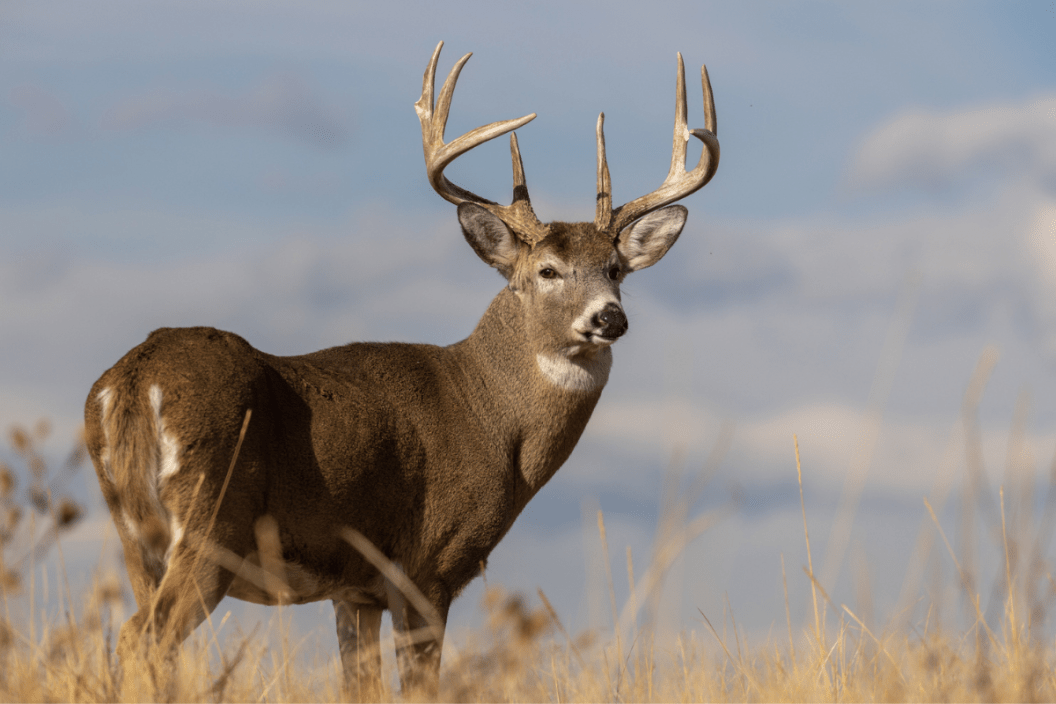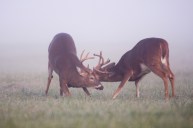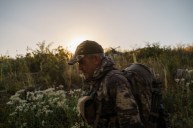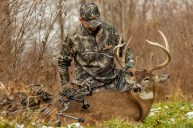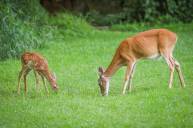Every year there are new studies published about when the rut will start in different parts of the country. Hunters and analysts alike examine past data, current conditions, weather, moon phases, and deer activity to attempt to nail down when the rut will be in full swing. For a typical hunter, timing the rut might seem somewhat impossible. Is there actual science to this? Or is it just wishful thinking? Sometimes it can feel like a little bit of both. Let's take a closer look to find some concrete factors that will help hunters time their favorite time of year.
Consider Geography

Peak breeding season timing will vary greatly depending on where you are located. Hunters in the southern half of the United States will have a much more difficult time narrowing down when their rut will start, whereas hunters in the north will have a more consistent pattern year after year. That's due to the more-predictable cold weather patterns that develop in the north, and the less consistent temperature drops in the south.
As the daylight hours become shorter and the mercury drops more dramatically, there is a natural instinct for does to start breeding. Essentially, there is a biological clock within female deer that will alert them to come into heat, triggering a response from bucks and ultimately, the rut.
The timing of a doe in heat is based on the potential well-being of her eventual offspring. If a doe is bred too early, she will go through a critical time of her pregnancy during the harshest part of the winter, preventing her from getting the essential nutrients and food she needs to support that pregnancy. If bred too late, the birth of her fawns will happen much too close to the next breeding cycle. That doesn't give her enough recovery time between cycles, making her and her fawns extremely vulnerable to predators.
Look for Cold Fronts
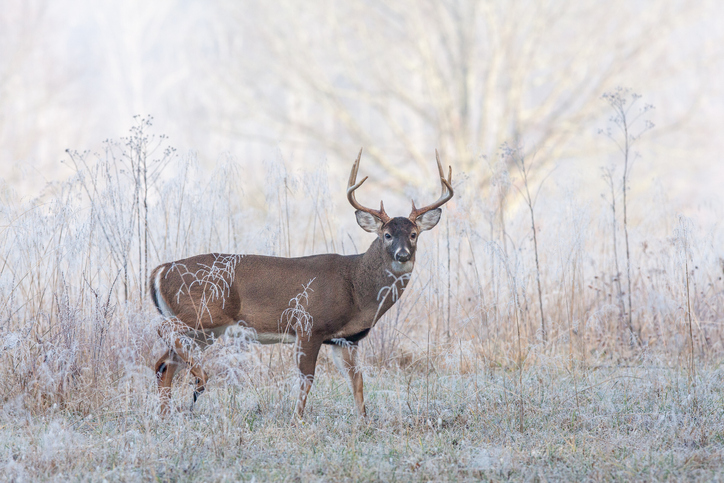
There is likely no greater factor in rut timing than the temperature. Whitetails can't read calendars, so they are relying solely on environmental factors such as temperature to determine when breeding will occur.
In the past, I've turned to the absolute experts to really get to the bottom of this. Jeff Sturgis of Whitetail Habitat Solutions speaks regularly about the impact that unusually warm hunting seasons can have on deer behavior, and specifically breeding activity. In fact, if the temperature in late October and early November is well above the historical average, you can expect that most of the breeding will be done in the middle of the night, and daily activity will be rather nonexistent.
However, something magical happens when that late October cold front comes in. It's as if a switch has been flipped and the does become slightly more tolerant of bucks tailing them. That window of five to seven days when every buck is on his feet, desperately trying to win over his female counterpart and fend off any challengers, is one of the best times to bag a solid buck. Pay attention to that weather forecast, and if you see a dramatic drop in temperature of 10 to 15 degrees, it's time to start putting in those all day sits.
Moon Phase

You could probably split whitetail hunters into two groups—those who believe the moon phase has a substantial impact on deer activity, and those who think it's mostly nonsense. Regardless, there are countless theories out there about how the moon phase is correlated to the rut, and many successful whitetail hunters swear by it. Unfortunately, there isn't much scientific evidence to back up these theories. However, we do know that shorter days trigger breeding instincts among deer, so it is perhaps logical to assume a new moon versus a full moon could have a slight impact on rut timing.
Historical Data

twildlife/Getty
A close friend of mine manages a massive deer farm in northern Ohio. Last year I reached out to him around the beginning of October, in hopes that he had some insight into when the rut would begin, given that his entire career consists of breeding deer. He responded with an exhausted tone, as if he had already been asked that same question a million times that day. "It'll start the same time it did last year. And the year before that. And the year before that," he said.
While this wasn't exactly the type of answer I was looking for, it did give me some ideas. I went through all of my trail camera files from the previous years and filtered the data to only show pictures from October 25th to November 15th. I then created a new folder, categorized by year, and went through every single picture.
I had to admit, my friend was right. The dramatic increase in daytime activity did begin around the same exact time every single year, plus or minus a few days. I couldn't believe I had never considered the consistency of rut timing before, as it now seems so clear.
While there could be factors that alter this consistency, such as an extremely dry year or considerably warmer weather than the average, I truly believe that analyzing historical data can be one of the most useful tools for timing the rut in that specific location.
It's only natural for hunters to let eagerness get the best of them, but there are more important factors to consider than nature's timing. Instead, you should analyze data from years past to see where the bucks are traveling, as well as what time of the year the activity really starts to pick up. Check the weather forecast daily and key in on cold fronts as they push through. Late October and early November are times where you want to put the most amount of hours in the stand as possible. You'll never know exactly when that trophy buck is going to show up, so stay prepared!
